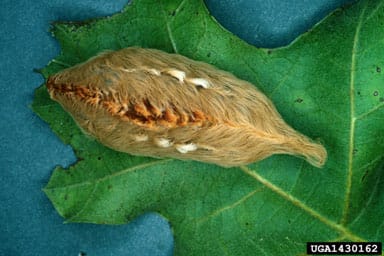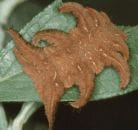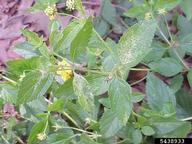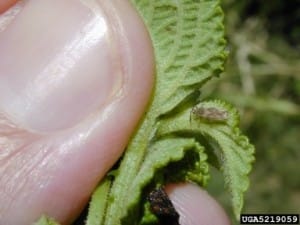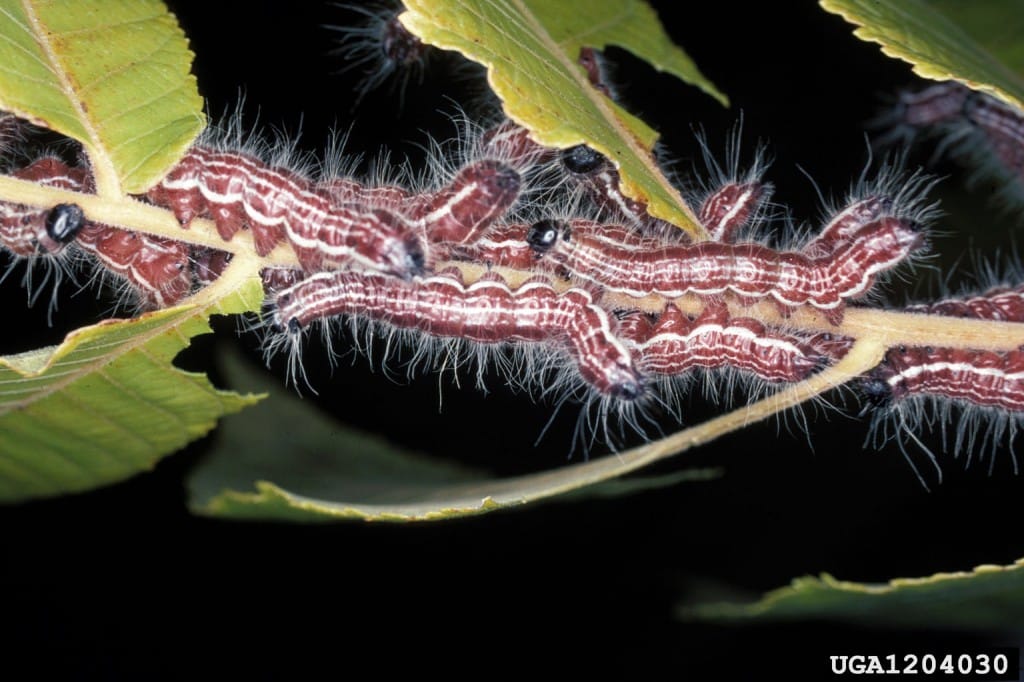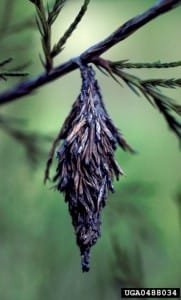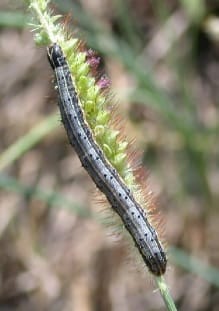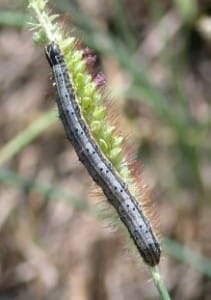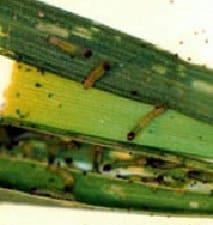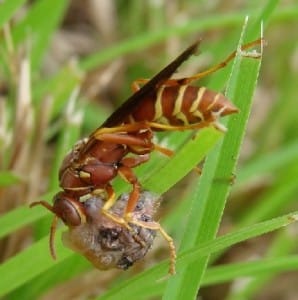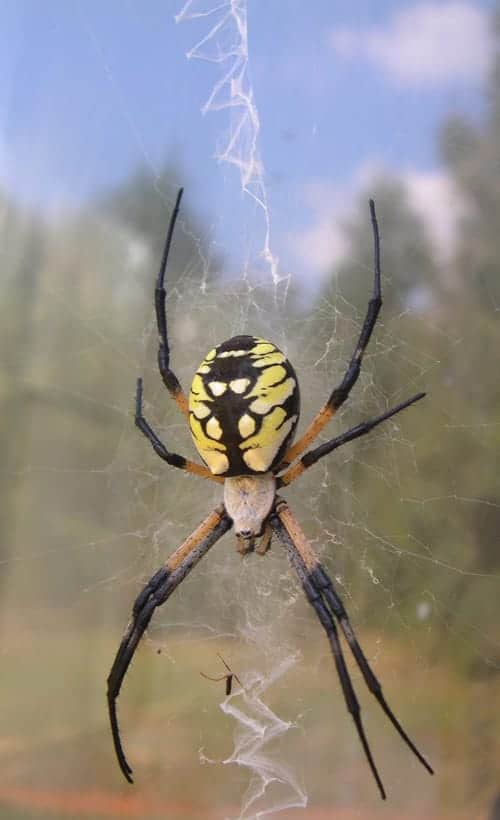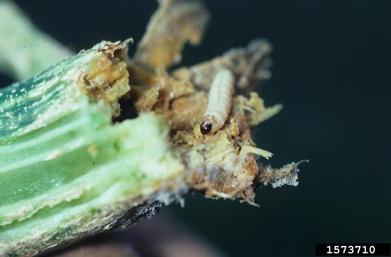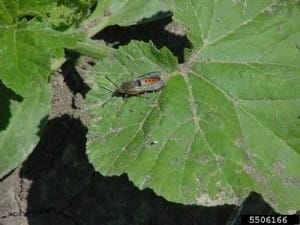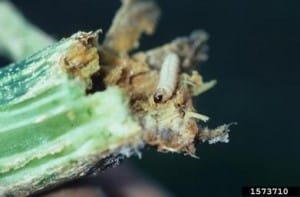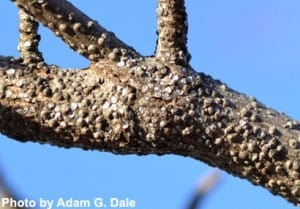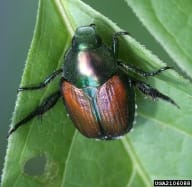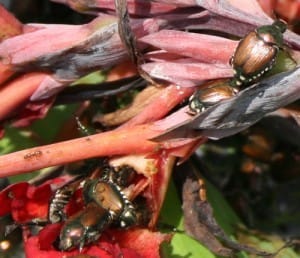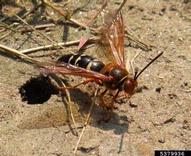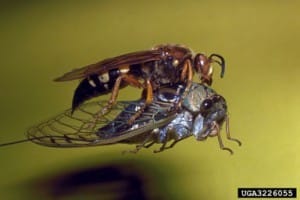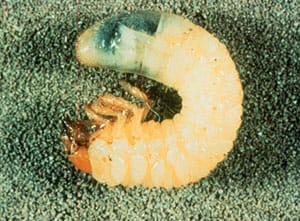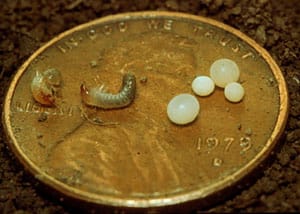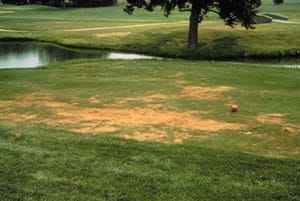This information came from the UGA publication, Stinging and Biting Pests by Elmer Gray, UGA Entomologist. See the original publication for more information on stinging and biting insects
The caterpillars of some moths have sharp, hollow spines or hairs that contain venom. Contact with these spines causes a burning inflammation of the skin, but can be more serious when in contact with a mucous membrane or the eyes. The spines from dead caterpillars are still problematic. Most of these caterpillars feed on the leaves of various hardwood trees and shrubs and contact with people is uncommon. The venomous spines are a defense mechanism and the colorful patterns or unusual body shapes serve as a warning to their enemies. About 25 species have spines that can be painful. Three of the more common species are described below.
Puss Caterpillars:
Puss caterpillars may be pale yellow, gray or reddish brown, about 1 inch long and densely covered with hairs. Among these hairs are hollow spines with venom. Stings on the hand can cause the entire arm to swell and become numb. Later, there can be severe pain followed by itching. Young children are often more severely affected. Large population increases in local areas can cause a problem.
Saddleback Caterpillars:
The saddleback caterpillar is approximately 1 inch long and has a brown slug-like body with a green mid-section. In the middle of the green midsection there is a distinctive brown saddle mark with a white border. Venom-filled spines are located on fleshy “knobs” on all sides of its body. Contact with this caterpillar’s spines can be extremely painful and severe reactions are possible for sensitive individuals.
Hag Moth Caterpillars:
The hag moth caterpillar is a strange-looking brownish caterpillar with six pairs of curly projections, three long and three short, coming from the flattened body. The plume-like projections on its back project out to the sides, suggesting the disarranged hairs of a hag. Among the brown hairs on the projections are longer black stinging hairs. These caterpillars are solitary and can easily be mistaken for leaf debris.
Control:
Control is usually not needed since contact is uncommon and these caterpillars are usually solitary. If a number of stinging caterpillars are seen feeding on the foliage around areas where children are active, spray the foliage with an insecticide labeled for tree and shrub application. Remember, dead caterpillars can still cause painful stings. Spread a cloth or plastic sheet under a tree or shrub to collect the fallen dead caterpillars, and then carefully dispose of them.
Find other Stinging and Venomous Caterpillars here.
